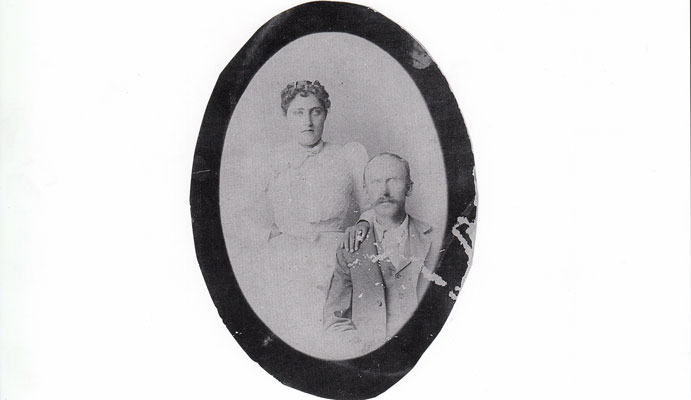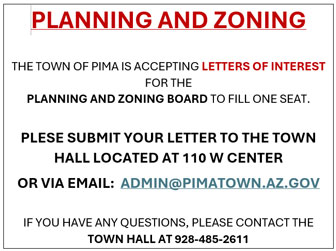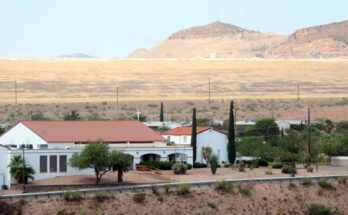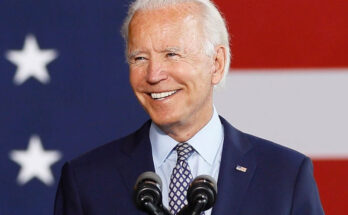Contributed Photo/Courtesy Eastern Arizona Museum & Historical Society of Graham County: Chester R. Jennings, right, and his wife, Addie Coons Jennings.
Column By Edres Bryant Barney
Chester Rhan Jennings made his appearance in this world on 14 Oct. 1863 to Lucy Rockefeller Jennings and Alonzo Farnham Jennings at Richford, Tioga, New York. His family also consisted of his maternal grandmother Rockefeller, his paternal grandfather Justus Jennings and his Uncle George.
He says there must have been a shortage of names, as Chester Rhan, a sheep buyer who stayed with the family at times, said “Name him for me, and I will give him a sheep.” They did and he did. Sometime later his mother marketed it and earned him $100.
Chester describes his family thus, “I was born to honest, hardworking parents; not rich, not poor, just what you might call prosperous farmers. They owned their own farm, which was 110 acres. They raised mostly milk cows, made butter, and had a small number of sheep. All of our mittens and socks were made of wool from our own sheep. We sold wool and sheep to the New York Market.” Chet was under the care of these five adults which he said was the ideal situation for a spoiled kid.
When he was 9, his sister Lucy was born. Then his father was hurt when hauling stove wood. The load had tipped over and threw him on a large block of wood and he died a few days later. His uncle George was sick for several weeks with typhoid as was Chet. “ I remember my grandfather putting his arm around me and saying ‘Be a good boy and you won’t want for anything.’” A few weeks later, his grandfather died of typhoid fever.
From around the age of 17 when his mother remarried, not caring to live with them, Chet continued to work for various relatives and other farmers for low wages (1882 – $18 a month). The next year for Charlie Curtis @ $20 a month — top wages at the time. After a dry run to the Pennsylvania woods with his Uncle John S. Rockefeller – not hired as they were ‘too green’ and John was already homesick – they returned to Richford. His uncle Lon (Alonzo W.) Rockefeller was eight months his senior and the two of them spent months scheming for a way to go to Kansas. In the fall of 1882, his mother finally gave permission, so in early December they bought tickets for Russell, Kansas. The trip was uneventful. He had saved $800 with his mother’s help, some from his wages and $400 he had from the Jennings Estate.
While visiting his cousins Frank Kellogg and the Alney family in Jamestown, Kansas he found two good cows and a bunch of two-year-old heifers in feeding for $20 a head. Then he bought twelve head of calves at $12 a head. Another good buy – but the market had been dropping and continued to go down. So in hindsight, Chester had learned to save money — but not to make it. His uncle Lon and cousin Ed Bryce had gone by team and buggy into Ness County, Kansas, and found a place to settle about 100 miles west. Chet joined them there and he and Ed each filed on a piece (160 acres) and went back to herd their stock there — Ed had about the same number as he and they lost some on the way. They built a corral and a small dugout, like a soldier’s foxhole, and started planting corn and maize for feed. Then one would herd a day and the other would farm, then change the next day. They raised about 12 acres; milled the hay and stacked it. Then Ed got homesick, as had uncle Lon, leaving Chester alone. Chester was alone and lonely but not homesick. He had long gotten over that. Meanwhile, settlers were coming in, taking what was left— filling up the area.
Beginning Jan. 6, 1886, he weathered a horrific several-day snowstorm that left him with frozen feet, fingers, face, and ears. He wrapped his feet in gunnysacks turned out the stock and hobbled over to a neighbor, Samuel Cash, who fed him and his horses. Cash also found Chester’s stock locked up — he had lost nine — cost him $20 to retrieve the 20 remaining. Chet was unaware that the outside world knew of their troubles. He found out later that his mother had written to his uncle Lon asking that he go find Chester and take him back to Russell and bury him next to Frank Rockefeller who had died of TB. Uncle Lon did come, remaining the rest of that winter.
Chester was not ready to be buried but he was ready to leave Kansas before another winter. He heard there were some broke cattlemen in the western part of the state, wanting to go to Utah. He set out, soon overtook them, and merged his 20 head and two ponies with their 1400 and 40 horses. His job was to pick up weak calves and help the cook. After unloading the herd at Cheyenne, the group went on to Rawlins, where there was ice on the water and their beds. Then south into Colorado, where Chester got a job at Hilby Park Ranch on Bear River for $35 a month. Most of the hands were Mormon boys from Utah. After writing his mother about his situation and receiving her warning, “Chester, be very careful of the Mormons. They are a very bad people.” Chester wrote back, “Mormons are just like everyone else. Some very fine people among them.”
Parachute Creek looked good and he hooked up with Bill Rhodes and his family but he soon sought a place where cattle wouldn’t scatter, as it was filling up with small ranchers. He returned after four months of searching various places in Colorado and Utah, and settling on Escalante Creek to be their new home and spent the winter; Mrs. Rhodes having died that fall leaving three small children.
In the spring, Chester, Bill, and a 4-year-old boy headed for Escalante Creek. After spending six days at the Green River Ferry awaiting repairs that were unsuccessful where they met John Oliver they ended up crossing in railroad boxcars. Arriving, they found a man with 1,000 head of cattle and the feed eaten. The sheepmen had moved in on him, hence, he moved to Chester’s “chosen spot”. They returned to Colorado and turned their cattle out; —sheep having moved in. During the winter, they trapped on Green River — mostly for beaver and on invitation stayed with John Oliver. In the spring, they found poor horses, poor cows, and dead cows. Chet headed back to Utah and worked there, enduring many rain and snowstorms. In November 1892, he left Ephraim, Utah with a camp bed and 16 horses, having sold off his cattle, headed for Arizona.
He came via Lee’s Ferry, White River, Rock Canyon, Ash Flat, and on to Indian Hot Springs, arriving in Eden with his horses and $44, seeking his friend, John Oliver. One of the young Coons girls that directed him to Oliver was destined to become his wife. He became one of John’s family. As he was preparing to move into a little mud house on his homestead a mile west of Hot Springs, he came down with chills and fever. He finally got over malaria but was affected for the rest of his life.
Hade Stockton got Will Markham to rent his farm two miles east of Eden to Chet. After a couple of years, he returned to his homestead, fencing it and bringing water to it. Then he and Will rented Will’s dad’s farm for a year but he kept several horses and cows in his own place. He was never lonely, as Sundays were visiting days and crowds would come to play cards and visit. Paul Gordon, a friend with asthma stayed until he was better, returning to Colorado. Johnny Busby was a lengthy roommate as was an older man, Wesley Smith. He also served a two-year term as Justice of the Peace, a job he was only too happy to relinquish. He went to all the public dances as most everyone did. He was dating Addie Coons off and on, as she was also going with a young man from Utah. Taking advantage of her recent break-up with the young man, Chet had obtained a marriage license and arranged for W.W. Hawkins (the J.P.) to go out to Spenazuma. On May 19, 1900, he asked Addie if she would like to ride out to Spenazuma and visit her brothers who were working there. She readily agreed and on the ride out, Chet asked her to marry him. Feeling totally safe, she quickly replied, “I’d marry you today if you had the preacher.”
The following is their wedding announcement under County Correspondence – Eden – in the local newspaper The Arizona Bulletin: May 25, 1900:
Married – May 19th at Spenazuma, Miss Addie Coons to C.R. Jennings. Justice W.W. Hawkins officiated. The contracting parties are both residents of Eden, well known and highly respected. The bride is a daughter of Mr. and Mrs. L.T. Coons and the groom is one of Eden’s most prosperous farmers. The wedding was a very quiet affair only a few friends and near relatives of the bride being present. That their cup of joy may always be overflowing in the home of Mr. and Mrs. Jennings is the wish of the Bulletin and their many friends.
This is the first of a two-part story. This and other individual and family histories may be found at the Eastern Arizona Museum in Pima, Thursday-Friday-Saturday, 10 a.m. – 3 p.m.










